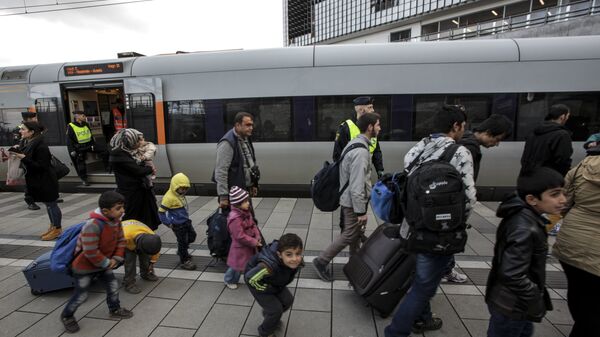Sweden's economic growth, measured in GDP per capita, is predicted to be the worst in Europe in 2018, shared with only the UK at a mere 0.7 percent, an updated forecast from the International Monetary Fund (IMF) said. This is seen as a continuation of last year's trend when Sweden ranked second-worst in the EU in terms of GDP growth.
At the end of September, outgoing Justice Minister Morgan Johansson tweeted that the Swedish economy was "going strong," hailing its GDP growth as "twice as high as the EU average." However, the report by Statistics Sweden cited by Johansson didn't feature GDP per capita, which is considered the true measure of a country's economic well-being.
Det fortsätter att gå bra för Sverige! BNP- tillväxten andra kvartalet 2018 var dubbelt så hög som EU-genomsnittet. https://t.co/PnI8Huhkyi
— Morgan Johansson (@johanssonmorgan) 28 сентября 2018 г.
Economist Tino Sanandaji, a long-time critic of mass immigration of lowly-educated migrants from the Middle East and North Africa, ventured that Sweden's economic backlash is linked to demographic trends. By contrast, the list of EU member-states projected to have the highest GDP rate includes Lithuania (5.1 percent), Slovenia (4.4 percent), Hungary and Poland (4.3 percent each) and Bulgaria (4.2 percent), none of whom was as hard hit by the European migrant crisis as Sweden, which since 2015 has received over 200,000 migrants. However, other factors should be considered as well, he noted.
READ MORE: Rampant Migrant Unemployment Threatens to Further Raise Swedish Taxes — Forecast
"It's partially due to immigration, but it may also be linked to something else," Sanandaji told the news outlet Nyheter Idag, stressing that Sweden's economic stability is exaggerated. To reflect this idea, he posted an image of a train wreck on his Facebook page.
The fact is that large immigrant groups do not enter the labor market as easily as ethnic Swedes, having a higher unemployment rate. On average, it takes Sweden's foreign-born residents eight years to enter the country's labor market. A quarter of those born abroad remain unemployed, while the general level of unemployment hovers at about 7 percent and dropping to as low as 2.5 percent among ethnic Swedes alone. When GDP is calculated per capita a dilution effect is thus created. Therefore, the IMF figures reflect shortcomings in the integration of immigrants.
READ MORE: Half of Sweden's 'New Arrivals' Reportedly 'Lack Compulsory Schooling'
Fluctuations in the world economy also have an impact on Sweden, which is a large export market. Yet another factor is Sweden's unbalanced and debt-ridden housing market.
"GDP per capita is not just a theoretical term for academics. Growth is crucial for the area of wage development, for municipal finances and not least for future pensions. If Sweden continues to have a low GDP per capita, we will have more people forced to live their old age with low pensions," Sanandaji told Nyheter Idag.
The global outlook is less balanced and expansion more tentative than hoped for last April #WEO https://t.co/wXxKO3jvL0 pic.twitter.com/6kSS7MJY3Y
— IMF (@IMFNews) 9 октября 2018 г.
Tino Sanandaji is an Iranian-born economist with a PhD from the University of Chicago. He is the author of several books, including "Mass Challenge" on Sweden's immigration policy, which reached the top slots of several best-seller lists.




